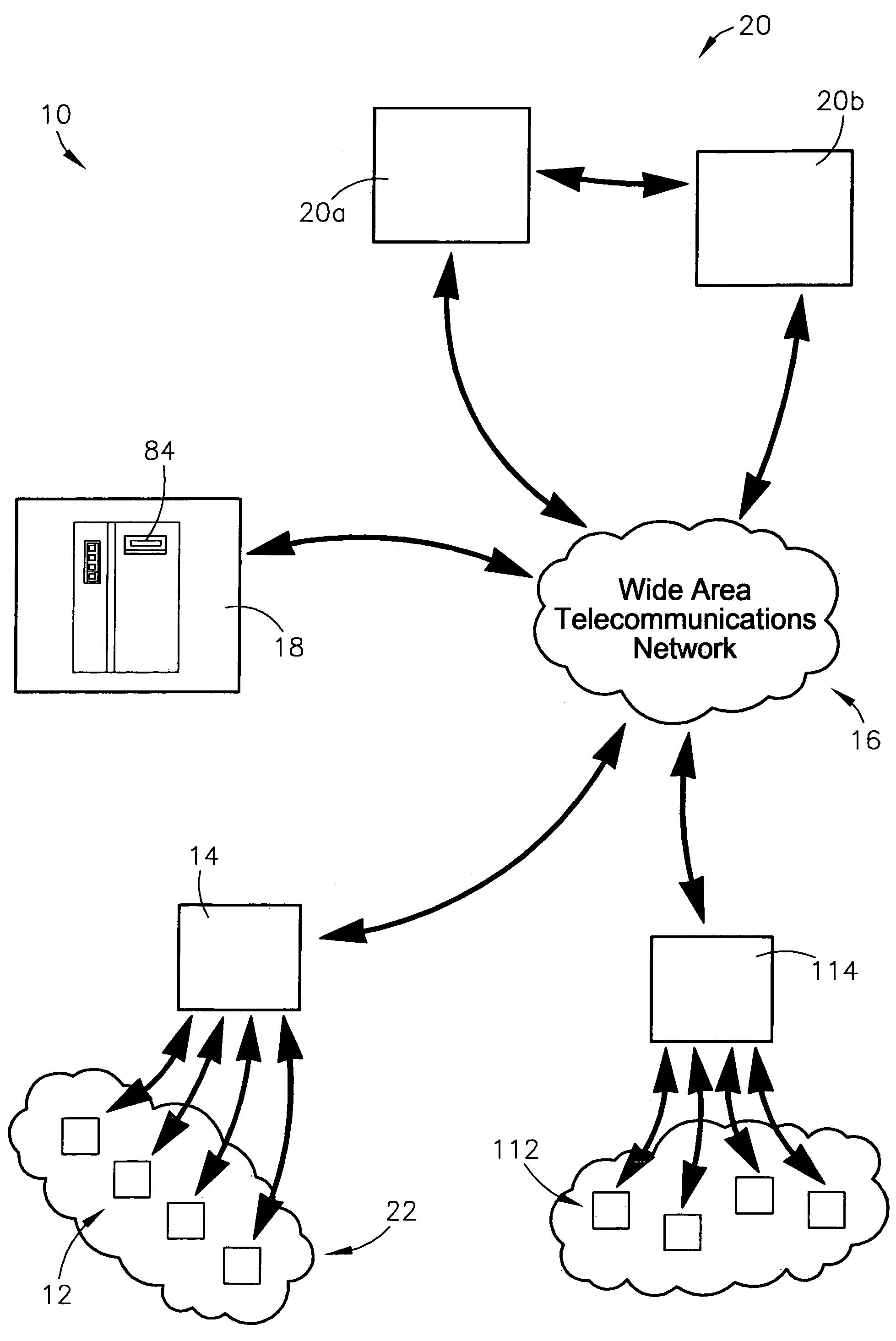System and method for identifying, reporting, and evaluating presence of substance
a technology of substance detection and reporting, applied in the field of system and method for detecting, identifying, reporting, and evaluating the presence of substances, can solve the problems of expensive and unwieldy the need for expensive collection of simple devices, so as to eliminate the exposure risks of human operators, the effect of accelerating the deployment and accelerating the detection
- Summary
- Abstract
- Description
- Claims
- Application Information
AI Technical Summary
Benefits of technology
Problems solved by technology
Method used
Image
Examples
example
[0098]It will be appreciated that the system 10 of the present invention may be adapted for use in any number of applications, such as, for example, monitoring hazardous industrial pollutants; monitoring agricultural or manufacturing areas for beneficial or harmful substances; detecting acts of terrorism involving nuclear, biological, or chemical weapons; monitoring battlefields or other hostile areas; or monitoring suspect or sensitive areas for intelligence gathering purposes.
[0099]In an illustrative example of use and operation, the system 10 of the present invention may function as follows. Referring particularly to FIGS. 5–7, in response to a spill or leak of hazardous or threatening substances, multiple IRAM units 12 are prepared to be airdropped into the surrounding area to confirm the presence of the substances and extent of contamination. In the process of this deployment, a needed sensor in one of the IRAM units 12 is diagnosed as faulty. The faulty sensor is removed and a...
PUM
| Property | Measurement | Unit |
|---|---|---|
| area | aaaaa | aaaaa |
| radioactive | aaaaa | aaaaa |
| time | aaaaa | aaaaa |
Abstract
Description
Claims
Application Information
 Login to View More
Login to View More - R&D
- Intellectual Property
- Life Sciences
- Materials
- Tech Scout
- Unparalleled Data Quality
- Higher Quality Content
- 60% Fewer Hallucinations
Browse by: Latest US Patents, China's latest patents, Technical Efficacy Thesaurus, Application Domain, Technology Topic, Popular Technical Reports.
© 2025 PatSnap. All rights reserved.Legal|Privacy policy|Modern Slavery Act Transparency Statement|Sitemap|About US| Contact US: help@patsnap.com



